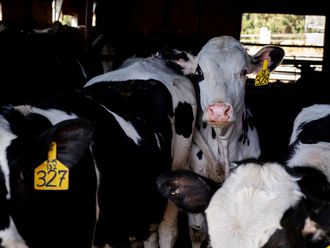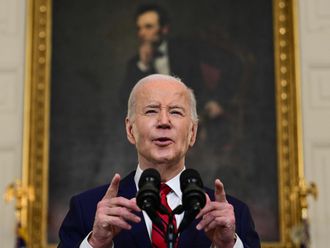Washington: I was about a year out of college, still writing wedding announcements and a feature called the “Auntie Litter” column for my hometown newspaper, when Helen Thomas came to San Antonio to give a speech. For the women in the newsroom, it felt like having the pope in town.
By the late 1970s, we had arrived in journalism. But it sometimes felt like we had landed without a map or a translator. So we were not going to miss an opportunity to meet the reporter who more than anyone else seemed to have figured it out.
Helen Thomas had planted the “first woman” flag on just about everything she did. She was the breacher of barriers formal and informal: the first woman to cover the White House full time for a news service, the first woman to be elected an officer of the White House Correspondents’ Association (and later, its president), the first woman to be tapped for the all-male Gridiron Club (also, its presidency).
Yet Thomas was someone to whom we could relate. She had done Washington’s equivalent of writing wedding announcements, assigned at the age of 40 to cover First Lady Jacqueline Kennedy, whose stylish outfits made more news than anything she actually did.
It was not a good fit. Jackie called Thomas a harpy, and pressured United Press International to reassign her.
Instead, UPI promoted her, and Thomas went on to produce scoop after scoop, decade after decade.
Thomas also learned something fundamental that applied through the years and across party lines: “Every president hates the press,” she said.
What Thomas figured out early — and what she taught us — was that there was value in making powerful people uncomfortable. It was a sign we are doing our jobs right.
Still, it is still something that women in particular struggle with.
That a double standard still exists for women, in journalism and elsewhere, is evident. We saw it in April, when Politico wrote about another pathfinding woman, New York Times executive editor Jill Abramson.
The story questioned whether Abramson has “the temperament to lead the paper.” She is “stubborn,” “condescending,” “difficult work with,” it wrote, citing incidents that might have been seen as hallmarks of strong management, if they had been written about a man.
Later, after I moved to Washington for the Los Angeles Times, I got to meet Thomas, and to work alongside her in the White House briefing room.
To younger colleagues, she was the opposite of that woman who had made every president since John F. Kennedy squirm. She went out of her way to offer advice and help.
In her later years, Thomas felt freer to unleash her political biases, and that became the sad coda to her career. But what should endure is what she taught us on the way there, which is the fact that reporters exist to disrupt the peace.
“I don’t think a tough question is disrespectful,” she said.












